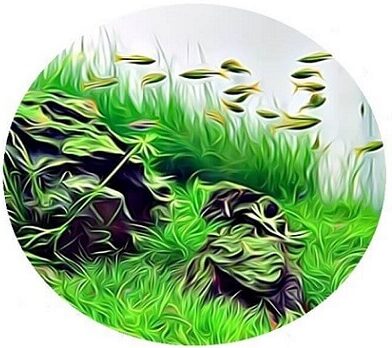Best Planted Aquarium, Read Before Start. Low or High tech?
Planted Aquarium
There is a lot of talk about planted aquariums and the necessity of having a special substrate & soil for aquariums, injected CO2, and powerful light, but this is not always the case.
Aquariums are defined according to the chosen fauna and flora.
You can have an aquarium where fish is the central point, an aquarium where fish and plants combine to make some pleasant, or even one where only the plants are.
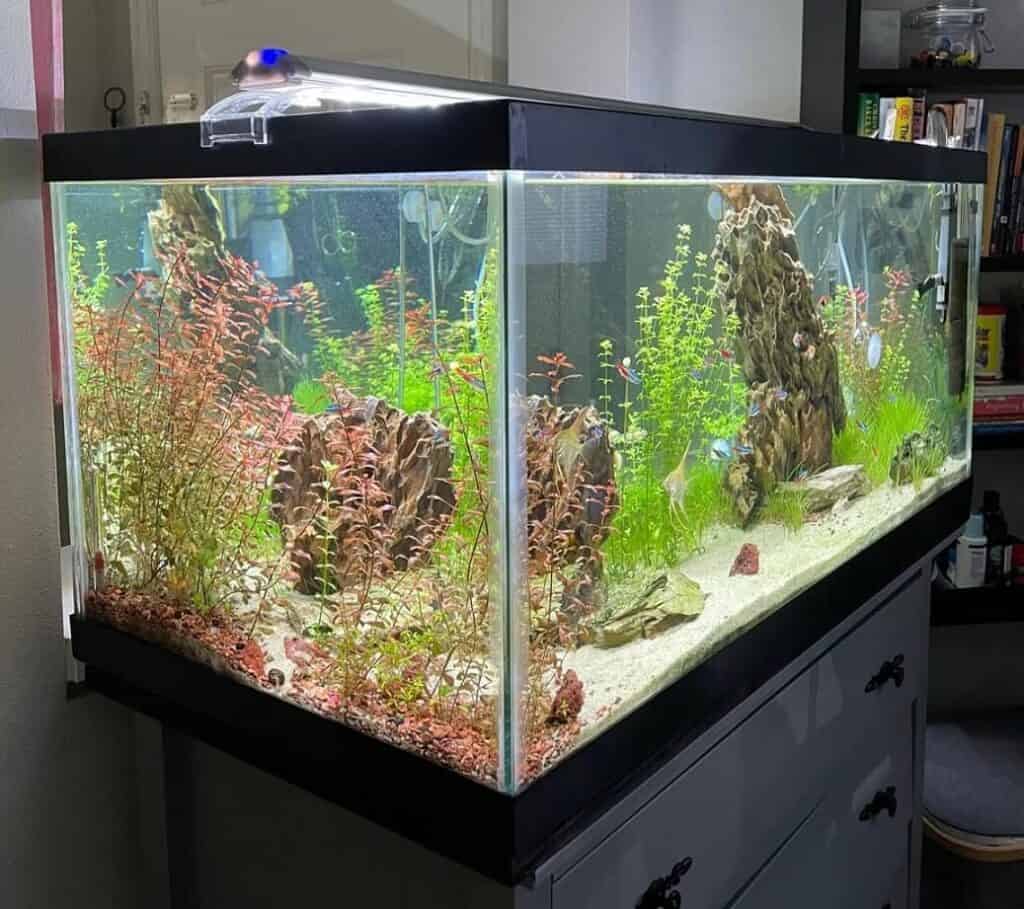
What is the difference between Low Tech Planted Aquariums and High Tech Planted Aquariums?
Several plants’ needs are met quite easily, being less demanding concerning lighting, the need for fertile substrate and liquid fertilization, and CO2 injection.
A Low-Tech or Low Maintenance aquarium dispenses sophisticated equipment (injected C02 and powerful lights).
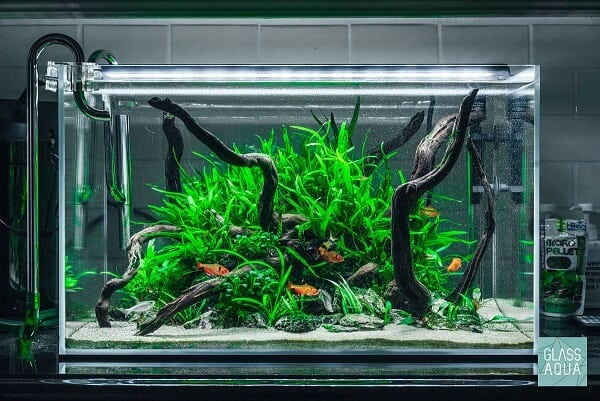
If you want an aquarium where the plants are there to beautify and make the environment more stable and healthy, consider having a Low-Tech planted aquarium (learn more here).
If your goal is to have a densely planted aquarium with demanding species and a carpet covering practically the entire aquarium, you are looking to have a High-tech planted aquarium.
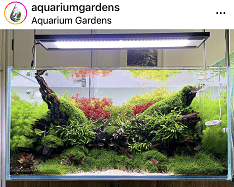
In this case, you will need a fertile active substrate, injected CO2, and powerful light. A fertilization routine will also be necessary.
Another option is to have an aquarium where the fish is the central point.
Look at this example:
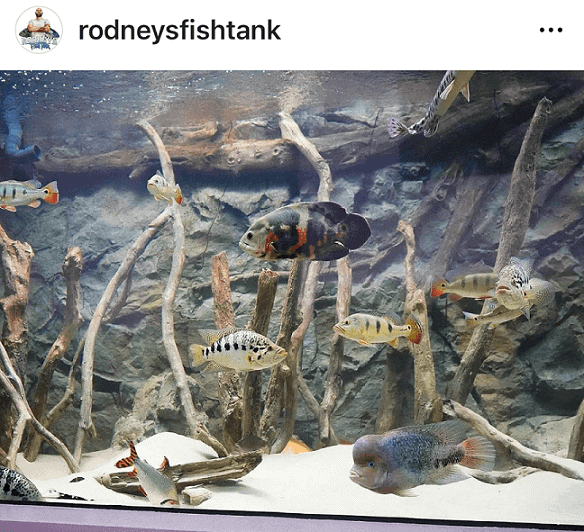
Thanks to @rodneysfishtank
The substrate:
Non-fertile / inert substrate
This type of aquarium soil is used mainly in Low-Tech planted aquariums.
Gravel, river rocks, colored rocks, and sand are non-fertile / inert substrates as they don’t have nutrients or very little but they are, for sure, a good substrate layer for your aquarium.

Can aquarium plants grow in gravel?
Yes, some aquatic plants can grow in grave if not very demanding. Many low-demand plants can absorb nutrients from the water through the root but also their leaves. They can leave just fine with a non-fertile substrate as they can absorb what they need from the water through leaves.
Examples of low tech aquarium plants that go very well with non-fertile substrates are Cabombas, Ceratophilum, Microsorum, Anubias, and mosses (mosses don’t even need substrate and can be tied/anchored to stones and logs).
You can find a list of 13 Easy-to-Grow Plants that will Thrive in your Low-Tech Aquarium here.
If you are looking to have low-demand plants and grave as your substrate, I recommend you use Seachem Flourish Tabs or API Root Tabs. You can bury these tabs close to these plants’ roots to give them nutrients.
If you want one or two plants with accelerated growth or a more demanding plant, you can plant them in a pot filled with a fertile substrate (having a sand or rock layer isolating them from the water) or using liquid fertilizers or even fertilization tablets.
If necessary, this pot can be buried in sand or gravel and removed quickly and safely.
Sand as an aquarium soil
Sand is beautiful, and it gives a natural look to your tank. It is a good substrate layer option for your aquarium.
I have been using and recommend “HTH 67074” filter sand for swimming pools filter (which you can find in Lowes, Walmart, Ace for about $15 25lbs). This is for sure the cheapest aquarium sand you will find.
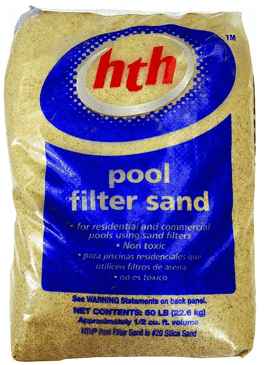
Can aquarium plants grow in sand?
Yes, some aquatic plants can grow in sand if not very demanding. Many low-demand plants can absorb nutrients from the water through the root but also their leaves.
If you are looking to have low-demand plants and sand as your substrate, I recommend you use Seachem Flourish Tabs or API Root Tabs. You can bury these tabs close to these plants’ roots to give them nutrients.
You can find a list of 13 Easy-to-Grow Plants that will Thrive in your Low-Tech Aquarium here.
If you want one or two plants with accelerated growth or a more demanding plant, you can plant them in a pot filled with a fertile substrate (having a sand or rock layer isolating them from the water) or using liquid fertilizers or even fertilization tablets.
If necessary, this pot can be buried in sand or gravel and removed quickly and safely.
Active substrate
Active substrates can be used in Low-Tech and also in High-Tech planted aquariums.
They are excellent soil for your aquarium anyways.
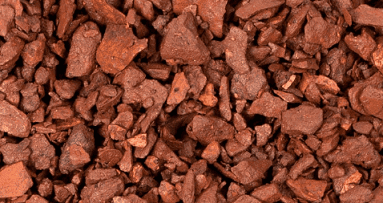
Active (or fertile) substrates contain nutrients that will feed your plants from their roots. Dirt and industrialized enriched substrates can be considered fertile substrates.
CO2:
Typically, every aquarium has dissolved CO2 in the water due to the fish’s breathing, decomposing detritus, and plants doing photosynthesis; however, the CO2 concentration is low and not enough for some specific plants to develop healthily.
For these demanding plants, it’s recommended to inject CO2 into the aquarium water (with caution because if you overdo it, the available oxygen will decrease, and the fish will start to die from intoxication).
It is essential to mention that without injected CO2, these demanding plants will grow but with less intensity and slowly. They won’t die.
If you have a High-Tech aquarium, you will need injected CO2.
If you have a Low-Tech aquarium, CO2 is not mandatory, although it will help your plants to grow faster.
A traditional CO2 system contains a CO2 cylinder, a gas regulator, CO2-resistant tubes, a bubble counter, and a CO2 diffuser.
This Youtube video explains how to install a CO2 Regulator but also shows all the system pieces. If you like to watch videos, it is a good start.
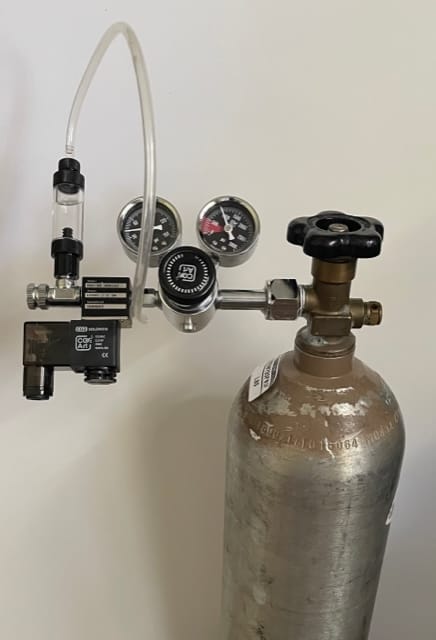
Do you need CO2 for aquarium plants?
You will need CO2 (injected CO2) in your aquarium if you are planning to have the so called High Demand Plants. With these plants, you have to have injected CO2.
If you are planning to have (or already have) low-demand plants, you don’t necessarily need CO2. If you inject CO2 in your tank’s water, these plants will grow faster and stronger.
CO2 cylinder
It can be purchased on Amazon, at your Local Fish Store, or at some local artisanal beer accessories store.
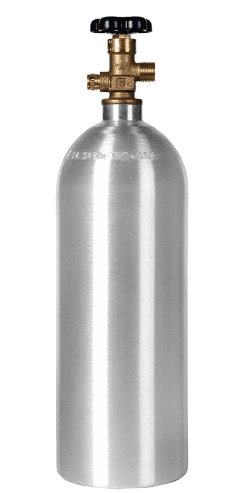
CO2 gas regulator
You will need a precise gas regulator to control the amount of gas you inject. Remember that you can kill your fish if you inject too much. You can have algae if you inject too little.
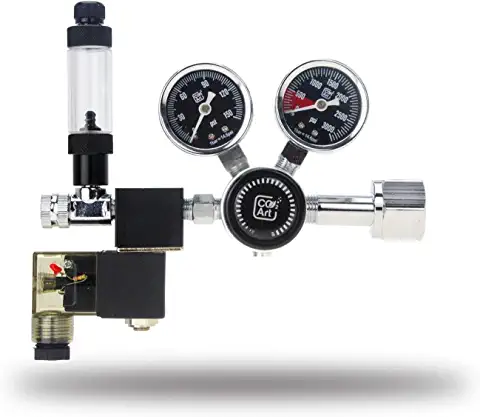
Bubble Counter
The bubble counter is a little device that helps to measure how much CO2 you are injecting. It is not made to be precise; it gives you an idea. You can count, let’s say, that you are injecting 30 bubbles per second. You will find many articles explaining how many bubbles per second you need for this plant, for that aquarium, etc.
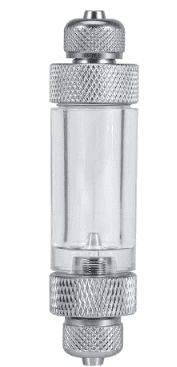
CO2 Diffuser
This device has a porous material and will dissolve one CO2 bubble on tons of tiny CO2 bubbles. That helps the CO2 to dissolve better in the aquarium water.
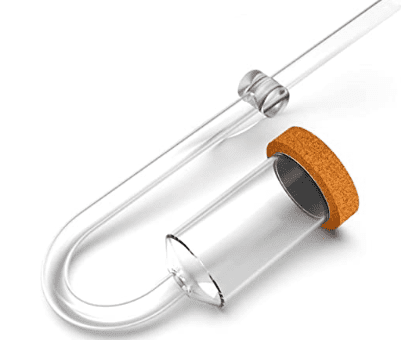
CO2 Resistant Tubes
They will connect your CO2 cylinder to the bubble counter and the CO2 diffuser.

Conclusion
No matter what type of aquarium you want, if a standard one or a low-tech or high-tech planted tank, like any other hobby, you must dedicate time and money to it.
Before buying your equipment, do initial research on the internet.
Look at different types of aquariums, pick the ones you like, and check the tank prices and accessories.
Try to estimate how much time per week you will need to dedicate to your new hobby.
In the “Fish Tank Basics” article, I will give you an idea about what you will have to buy, how much time per week you will need to dedicate to your fish, and some other tips about what to do when you go out of town for some days or even in an extended vacation.
In the Aquarium Step by Step, you can check the required items to buy if you want to start with a standard aquarium.
References
Bentley Pascoe – Substrate 101 Youtube Episode here.
Bentley Pascoe – Substrate 101 – Understanding a Crucial Part of Planted Tanks here.
Diana Walstad has an amazing article called Planted Aquariums in her website – “Information about ‘Ecology of the Planted Aquarium’ plus articles by Diana Walstad on planted tanks, tropical fish diseases, and guppy breeding.”
Light in Planted Tanks from @Acinonyx and the Barr Report Website here.
Also in the Barr Report, there is a very good article from Jason King about Non CO2 Methods here.
Next
No matter what type of aquarium you want, if a standard one, a low or high-tech planted tank, or even a fish only, like any other hobby, you must dedicate time and money to it.
Before buying your equipment, do initial research on the internet.
Look at different types of aquariums, pick the ones you like, and check the tank prices and accessories.
Try to estimate how much time per week you will need to dedicate to your new hobby.
In the “Fish Tank Basics” article, I will give you an idea about what you will have to buy, how much time per week you will need to dedicate to your fish, and some other tips about what to do when you go out of town for some days or even in an extended vacation.
In the Aquarium Step by Step, you can check the required items to buy if you want to start with a standard aquarium.
